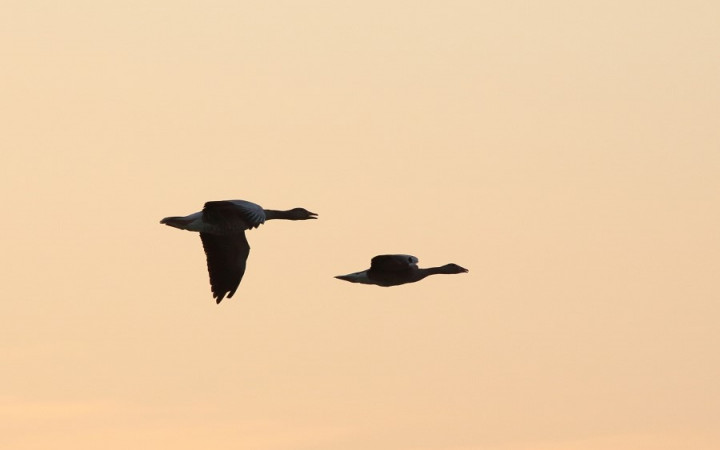Most of our Wonder Friends already know that many birds migrate from place to place each year. As the weather begins to turn cold in the north, many birds pack their bags and head south to warmer areas for the winter.
Do birds simply hate cold weather? Not necessarily! Many birds can do just fine in cold weather as long as there is plenty of food. However, the foods that many birds eat disappear in the winter as the amount of sunlight decreases and plants finish their life cycles.
When food begins to become scarce, many birds know it's time to head south to find new sources of food. But how exactly do they know which direction south is?
If you've ever watched birds flying south for the winter, you may have noticed that none of them appear to be carrying maps. The next time you see a flock of birds flying south in a “V" pattern, take a closer look. Do you see any of the birds holding a compass or a Global Positioning System (GPS) device?
Without the benefit of a map, compass, or GPS device, birds nonetheless find their way south to new homes for the winter and back north again the following season. Some birds, such as the Arctic tern, can make round trips of 40,000-50,000 miles each year! So how do they do it?
The best way to find out would be to ask a bird. Unfortunately, the birds we asked just squawked and flew off. Looks like we'll have to dig a little deeper and rely on what scientists have learned over the years.
Experts believe that birds rely upon a combination of scientific factors to help them know where to travel. Some of these factors were also used by human beings before modern technology provided all sorts of resources and machines to pinpoint where we are and where we're going at all times.
One thing birds definitely rely upon is the Sun. The Sun rises in the east and sets in the west. Birds flying south for the winter can stay on track by using the Sun's position in the sky throughout the day as a guide.
Of course, once the Sun sets, it isn't much help as a guide. Luckily, many birds can also navigate by the position of the stars in the sky once night rolls around. Constellations guided many sailors at night before modern technology came along. Birds can use the stars as aids in the same way.
Birds also have the benefit of a bird's eye view. Human hikers lost in the woods sometimes must climb to the top of the nearest mountain to be able to see natural or man-made landscape features, like roads or coastlines, to find their way home. Birds just take to the sky where they get an awesome view of everything below them. Sometimes traveling south is as simple as following the path of a river that travels south to warmer temperatures.
Finally, some scientists believe some birds may also get some of their guidance from Earth's magnetic field. Some species of birds have a highly-magnetic mineral called magnetite in their brains. Experts believe this mineral may help birds detect Earth's magnetic field and use it to guide them south.




